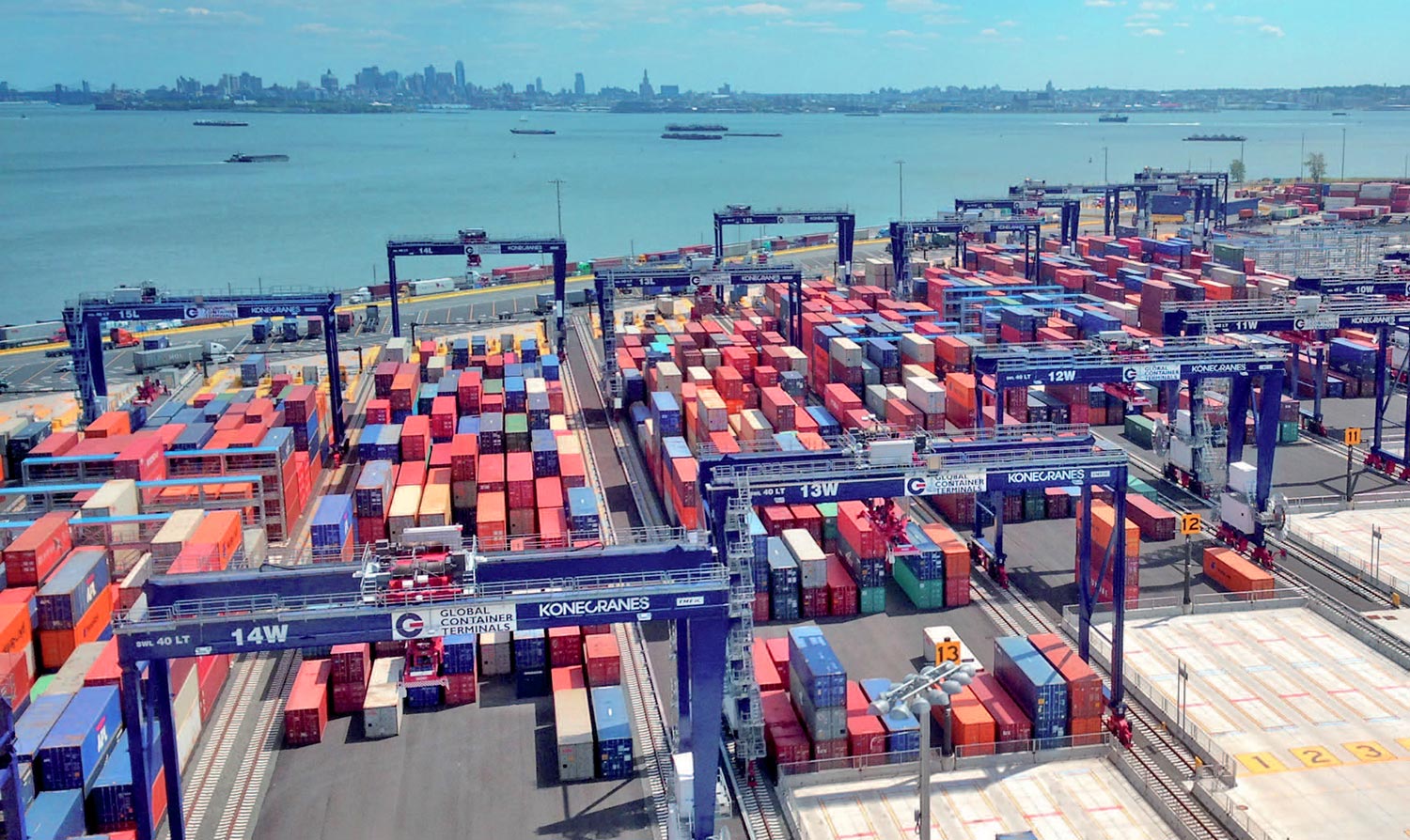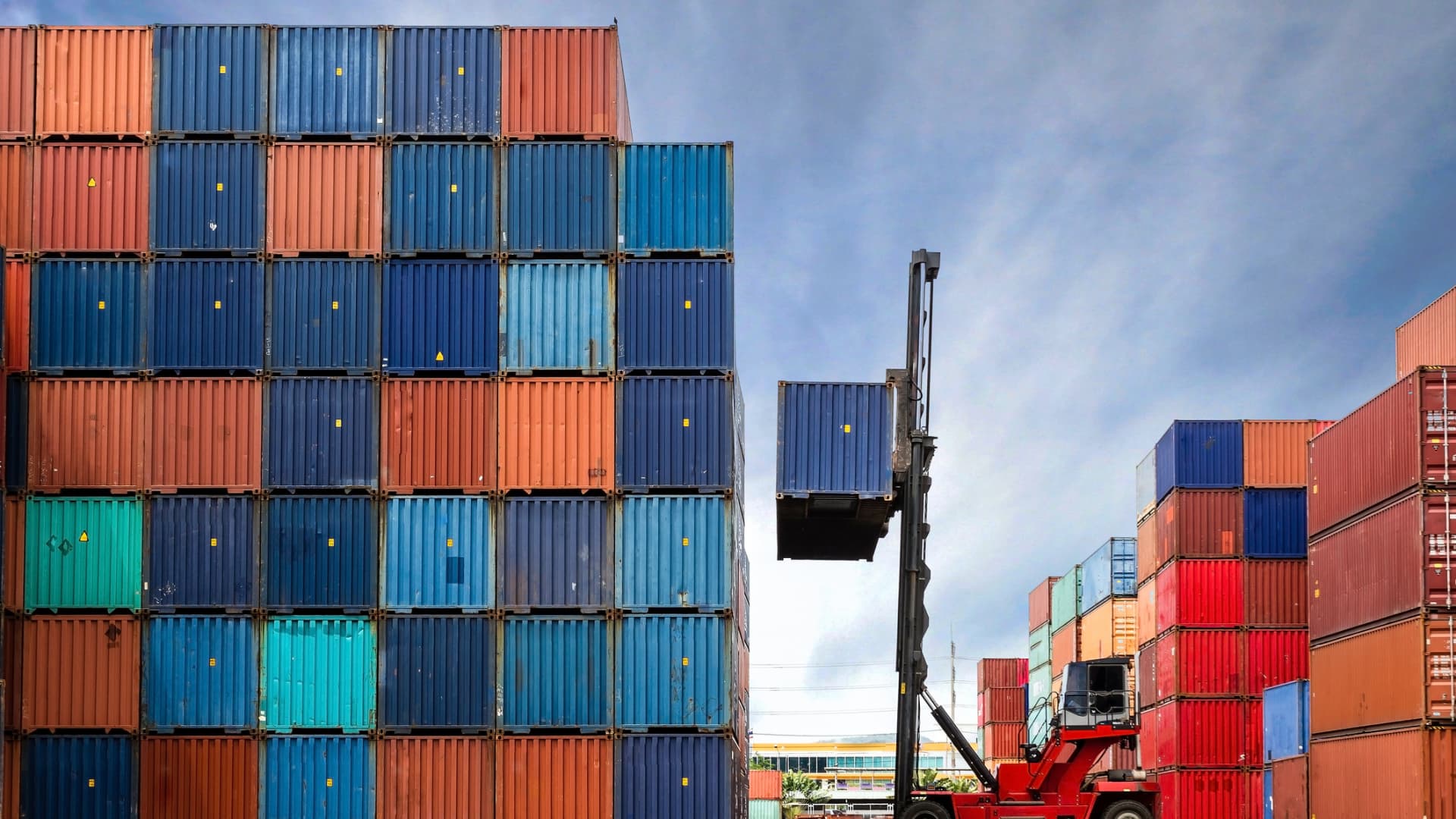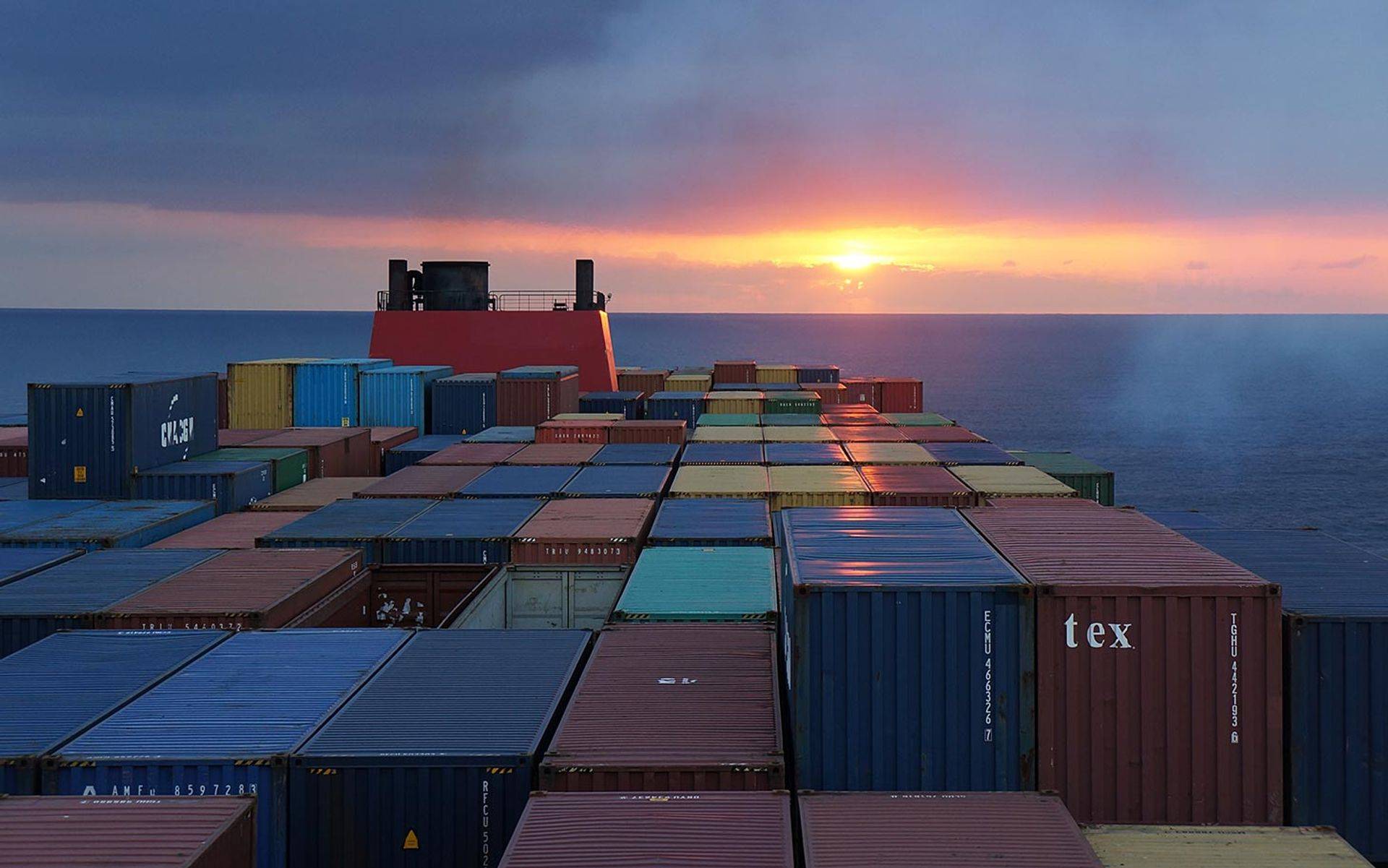The problem of container stacking generally exists in the operation management of the port yard. Under the premise that the number of containers is known, the constraint conditions such as delivery time limit, weight limit and stacking height limit are required to be met, and the goal is to achieve the minimum number of stack occupied.

In container terminals or freight yards, containers need to be stacked vertically. It is a complex logistics problem, which involves the consideration of stacking height, stacking stability, space utilization efficiency and operation automation.
In the container yard stacking, the common operation modes include manual and mechanical stacking. Manual stacking usually requires an operator to use a tool such as a stacker or forklift to move containers from the ground or other stacking location to the target location for stacking. Mechanical stacking is performed by means of equipment such as a piler, an automated guided vehicle or an automated system.


Common difficulties and challenges in container yard stacking problems include:
1. Stacking height: Container yards usually need to stack containers vertically to a higher height to make full use of yard space. The height of the stacking has certain limitations, and it is necessary to consider the bearing capacity of the equipment, the stability of the stacking and safety factors.
2. Stacking stability: During the stacking process, it is necessary to ensure the stability of containers to prevent landslides and tilts from causing accidents. Especially in the high height of the stacking, the requirements of stacking stability are higher, and some measures need to be taken, such as the use of fixed fixtures or supports, reasonable adjustment of the position of the container.
3. Space utilization efficiency: Container yards usually have limited space and need to stack as many containers as possible in a limited space. Therefore, it is necessary to reasonably plan the stacking mode of containers, make full use of the storage yard space, and avoid space waste.
4. Degree of automation: With the development of logistics automation technology, container stacking has also begun to use automation equipment to improve operational efficiency and reduce manual operation. Automated stacking usually uses equipment such as stackers, automatic guided vehicles and automatic control systems to achieve mechanized stacking operations and improve efficiency and accuracy.
Container yard is a transfer station connecting sea transport and land transport. Storage yard management is an important link of dock production, reasonable arrangement of storage yard can not only improve the loading and unloading speed of the dock, reduce the turnover rate, but also improve the utilization of the dock yard and reduce the production cost to the maximum extent. The premise of optimizing the management of the storage yard is the reasonable admission of import and export containers. In the process of storage yard management and container loading and transportation, heavier containers are required to be placed on the top of lighter ones in order to meet the conditions of loading stability. Meanwhile, in order to optimize subsequent lifting operations and reduce the number of emptier containers, the tight delivery date should be considered when the containers are admitted. The goods belong to the order delivery date is later priority entry.
The application of laser ranging sensors in container stacking problems is to measure the distance between the container and the laser technology, thereby providing real-time distance data to help the operator or automated equipment to carry out stacking operations.

The application and advantages of laser ranging sensors in container yard stacking problems include the following aspects:
1. High-precision ranging: In the container yard, the height of the stacking is usually higher, so high-precision ranging technology is needed to accurately measure the height of the container. Laser ranging sensors can provide highly accurate distance measurements to help operators or automation equipment accurately determine the stacking height of containers, avoid exceeding safety limits, and ensure the stability of operations.
2. Fast response & stability: The laser ranging sensor has the characteristics of fast response, and can obtain distance data in a very short time and update it in real time. This allows the sensor to monitor the position and height changes of the container in real time, detect the situation of stacking instability in time, and thus alert the operator or automated system to take measures to ensure the stability and safety of the stacking.
3. Space utilization: Container yards usually need to maximize the use of available space. Laser ranging sensors can accurately measure the distance between containers, helping to optimize the stacking layout and ensuring minimum spacing between containers for more efficient use of space.
4. Automation: In the automated stacking system, laser ranging sensors play a key role. By providing real-time distance data, sensors help automation equipment (such as stacking robots) accurately identify the location and height of containers for automated stacking operations. This increases automation, reduces manual intervention and improves operational efficiency.
5. High adaptability: Laser ranging sensor is suitable for a variety of environments, whether indoor or outdoor, bright or dim, can provide stable and reliable ranging data. This makes it can be reliably applied to container yard stacking problems under different conditions.
6. Non-contact measurement: The laser distance measurement sensor is a non-contact measurement technology that does not require the object to be in direct contact with the sensor, avoiding the risk of object damage or sensor contamination. This is especially important for stacking objects, as they are often heavy and valuable.
SenkyLaser Recommended model:
QG100 laser ranging sensor for this application technical support:
1. High ranging range: The QG100 laser ranging sensor can quickly and accurately carry out non-contact measurement, which can reach the distance of more than 100 meters (0.4-100m) under outdoor strong light, covering the common distance range in the container yard. This allows the operator to obtain accurate stack height information without touching the container, improving the safety and efficiency of the operation.
2. Suitable for different environments: The laser ranging sensor can be widely used in indoor and outdoor environments, and has the ability to resist outdoor strong light. Whether in a closed yard environment or an outdoor yard exposed to sunlight, the sensors are able to measure distances reliably and accurately. Its operating temperature ranges from -30 ° C to +60 ° C indoors and outdoors, and the minimum storage temperature can reach -40 ° C to +70 ° C.
3. High precision measurement: The laser ranging sensor has excellent measurement accuracy, repeatability and accuracy are ±5cm. Accurate distance measurement is essential to ensure stack stability during stacking in container yards. The sensors can monitor the stacking height of containers in real time and provide high-precision measurement data to help operators avoid stacking errors and improve the operational efficiency and safety of the yard.
4. High response speed: The laser ranging sensor has a fast response speed and can measure the change of the container position during the stacking process in real time. With a measurement frequency of up to 1,000 times per second, by quickly capturing changes in box position, the operator can adjust the stacking action in time to improve the efficiency of the entire stacking process.
5. Universal data interface: The laser ranging sensor has a friendly and universal data interface, including RS485/RS232/4-20mA/TTL optional. This allows the sensors to be easily integrated with existing yard control systems, allowing operators to monitor and control the stacking process in real time through the ranging data provided by the sensors for more intelligent yard management.
6. High reliability and protection level: The laser ranging sensor is industrial grade, and its aluminum alloy black housing can provide good protection level IP67, ensuring the stability and durability of the sensor in harsh environments. This protection enables the sensor to work reliably in the yard for a long time.
7. Compact size and easy integration: The laser ranging sensor has a compact size (63.4×60×35mm) for easy integration into equipment such as stacking machinery. Its compact size allows the sensor to be easily installed on the yard equipment without too much impact on the overall structure of the equipment.
8. Safety guarantee: The laser ranging sensor belongs to a class of laser eye safety laser products, and there is no need to worry about safety issues when using. The operator can confidently use the sensor for distance measurement without any harm to the safety of users and others.

To sum up, the QG100 laser ranging sensor has the advantages of long distance distance, adaptability to a variety of environments, high precision measurement, high response speed, universal data interface, high reliability and protection level, compact size and good safety guarantee in the container yard stacking problem. By applying the laser ranging sensor, the operator can monitor and control the stacking process in real time, and improve the efficiency and safety of the storage yard management.
PREV:NO
NEXT:NO